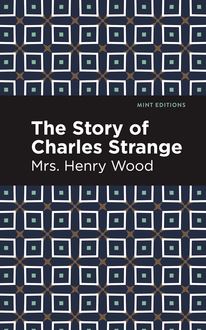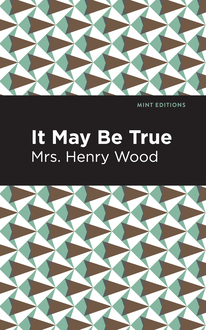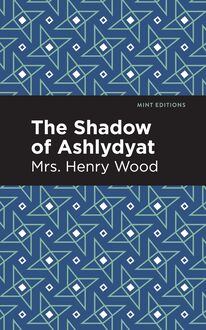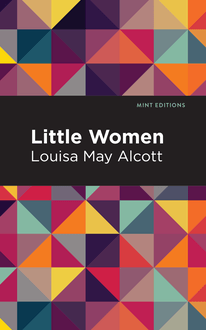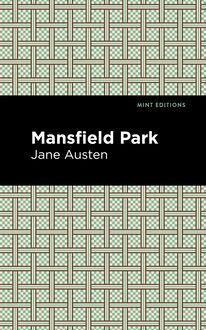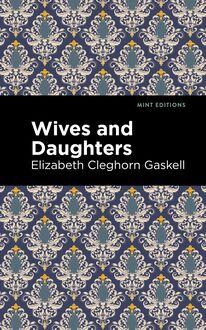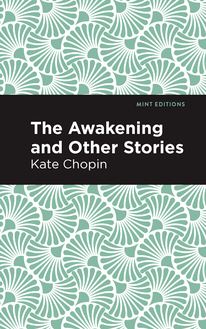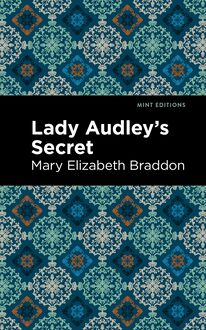-
 Univers
Univers
-
 Ebooks
Ebooks
-
 Livres audio
Livres audio
-
 Presse
Presse
-
 Podcasts
Podcasts
-
 BD
BD
-
 Documents
Documents
-
- Cours
- Révisions
- Ressources pédagogiques
- Sciences de l’éducation
- Manuels scolaires
- Langues
- Travaux de classe
- Annales de BEP
- Etudes supérieures
- Maternelle et primaire
- Fiches de lecture
- Orientation scolaire
- Méthodologie
- Corrigés de devoir
- Annales d’examens et concours
- Annales du bac
- Annales du brevet
- Rapports de stage
La lecture à portée de main
Vous pourrez modifier la taille du texte de cet ouvrage
Découvre YouScribe en t'inscrivant gratuitement
Je m'inscrisDécouvre YouScribe en t'inscrivant gratuitement
Je m'inscrisEn savoir plus
Vous pourrez modifier la taille du texte de cet ouvrage
En savoir plus

Description
Mathilda (1959) is a posthumous novella by English writer and Romantic Mary Shelley. Written as a means of self-distraction following the deaths of her young children in Italy, Mathilda is a work haunted by tragic loss. Unpublished for over a century, its posthumous appearance helped cement Shelley’s reputation as a leading Romantic, an artist unafraid of confronting such themes and taboos as incest and suicide in her work.
Mathilda, named after its narrator, traces a young woman’s troubled life from birth to her premature deathbed. Following her mother’s death during childbirth and her father’s subsequent abandonment, Mathilda is raised by her aunt in rural Loch Lomond, Scotland. A gifted reader and promising intellectual, she rises from her difficult circumstances to lead a relatively happy childhood. When, at the age of 16, her father reenters her life, the two reconnect and eventually move together to London. As she begins to receive suitors however, her father’s strange jealousy and irrational behavior conceal a terrible secret. When he reveals his incestuous desires to Mathilda, she rejects him, resulting in his suicide and leaving her unmarried, orphaned, and financially unstable. Living in self-imposed exile, she befriends the similarly melancholy Woodville, a young widower and poet who does his best to care for her despite her crushing bouts of depression and frequent suicidal thoughts. Mathilda is an emotionally complex and ultimately difficult novella recognized for its controversial themes and for its parallels to Shelley’s own tragic life.
With a beautifully designed cover and professionally typeset manuscript, this edition of Mary Shelley’s Mathilda is a classic of English literature reimagined for modern readers.
Sujets
Informations
| Publié par | Mint Editions |
| Date de parution | 09 février 2021 |
| Nombre de lectures | 0 |
| EAN13 | 9781513276441 |
| Langue | English |
| Poids de l'ouvrage | 2 Mo |
Informations légales : prix de location à la page 0,0400€. Cette information est donnée uniquement à titre indicatif conformément à la législation en vigueur.
Extrait
Mathilda
Mary Wollstonecraft Shelley
Mathilda was first published in 1959.
This edition published by Mint Editions 2020.
ISBN 9781513271446 | E-ISBN 9781513276441
Published by Mint Editions®
minteditionbooks.com
Publishing Director: Jennifer Newens
Design & Production: Rachel Lopez Metzger
Project Manager: Micaela Clark
Typesetting: Westchester Publishing Services
C ONTENTS I NTRODUCTION M ATHILDA T HE F IELDS OF F ANCY
I NTRODUCTION
O f all the novels and stories which Mary Wollstonecraft Shelley left in manuscript, only one novelette, Mathilda , is complete. It exists in both rough draft and final copy. In this story, as in all Mary Shelley’s writing, there is much that is autobiographical: it would be hard to find a more self-revealing work. For an understanding of Mary’s character, especially as she saw herself, and of her attitude toward Shelley and toward Godwin in 1819, this tale is an important document. Although the main narrative, that of the father’s incestuous love for his daughter, his suicide, and Mathilda’s consequent withdrawal from society to a lonely heath, is not in any real sense autobiographical, many elements in it are drawn from reality. The three main characters are clearly Mary herself, Godwin, and Shelley, and their relations can easily be reassorted to correspond with actuality.
Highly personal as the story was, Mary Shelley hoped that it would be published, evidently believing that the characters and the situations were sufficiently disguised. In May of 1820 she sent it to England by her friends, the Gisbornes, with a request that her father would arrange for its publication. But Mathilda , together with its rough draft entitled The Fields of Fancy , remained unpublished among the Shelley papers. Although Mary’s references to it in her letters and journal aroused some curiosity among scholars, it also remained unexamined until comparatively recently.
This seeming neglect was due partly to the circumstances attending the distribution of the family papers after the deaths of Sir Percy and Lady Shelley. One part of them went to the Bodleian Library to become a reserved collection which, by the terms of Lady Shelley’s will, was opened to scholars only under definite restrictions. Another part went to Lady Shelley’s niece and, in turn, to her heirs, who for a time did not make the manuscripts available for study. A third part went to Sir John Shelley-Rolls, the poet’s grand-nephew, who released much important Shelley material, but not all the scattered manuscripts. In this division, the two notebooks containing the finished draft of Mathilda and a portion of The Fields of Fancy went to Lord Abinger, the notebook containing the remainder of the rough draft to the Bodleian Library, and some loose sheets containing additions and revisions to Sir John Shelley-Rolls. Happily all the manuscripts are now accessible to scholars, and it is possible to publish the full text of Mathilda with such additions from The Fields of Fancy as are significant.
The three notebooks are alike in format. One of Lord Abinger’s notebooks contains the first part of The Fields of Fancy , Chapter 1 through the beginning of Chapter 10, 116 pages. The concluding portion occupies the first fifty-four pages of the Bodleian notebook. There is then a blank page, followed by three and a half pages, scored out, of what seems to be a variant of the end of Chapter 1 and the beginning of Chapter 2. A revised and expanded version of the first part of Mathilda’s narrative follows (Chapter 2 and the beginning of Chapter 3), with a break between the account of her girlhood in Scotland and the brief description of her father after his return. Finally there are four pages of a new opening, which was used in Mathilda . This is an extremely rough draft: punctuation is largely confined to the dash, and there are many corrections and alterations. The Shelley-Rolls fragments, twenty-five sheets or slips of paper, usually represent additions to or revisions of The Fields of Fancy : many of them are numbered, and some are keyed into the manuscript in Lord Abinger’s notebook. Most of the changes were incorporated in Mathilda .
The second Abinger notebook contains the complete and final draft of Mathilda , 226 pages. It is for the most part a fair copy. The text is punctuated and there are relatively few corrections, most of them, apparently the result of a final rereading, made to avoid the repetition of words. A few additions are written in the margins. On several pages slips of paper containing evident revisions (quite possibly originally among the Shelley-Rolls fragments) have been pasted over the corresponding lines of the text. An occasional passage is scored out and some words and phrases are crossed out to make way for a revision. Following page 216, four sheets containing the conclusion of the story are cut out of the notebook. They appear, the pages numbered 217 to 223, among the Shelley-Rolls fragments. A revised version, pages 217 to 226, follows the cut.
The mode of telling the story in the final draft differs radically from that in the rough draft. In The Fields of Fancy Mathilda’s history is set in a fanciful framework. The author is transported by the fairy Fantasia to the Elysian Fields, where she listens to the discourse of Diotima and meets Mathilda. Mathilda tells her story, which closes with her death. In the final draft this unrealistic and largely irrelevant framework is discarded: Mathilda, whose death is approaching, writes out for her friend Woodville the full details of her tragic history which she had never had the courage to tell him in person.
The title of the rough draft, The Fields of Fancy , and the setting and framework undoubtedly stem from Mary Wollstonecraft’s unfinished tale, The Cave of Fancy , in which one of the souls confined in the center of the earth to purify themselves from the dross of their earthly existence tells to Sagesta (who may be compared with Diotima) the story of her ill-fated love for a man whom she hopes to rejoin after her purgation is completed. Mary was completely familiar with her mother’s works. This title was, of course, abandoned when the framework was abandoned, and the name of the heroine was substituted. Though it is worth noticing that Mary chose a name with the same initial letter as her own, it was probably taken from Dante. There are several references in the story to the cantos of the Purgatorio in which Mathilda appears. Mathilda’s father is never named, nor is Mathilda’s surname given. The name of the poet went through several changes: Welford, Lovel, Herbert, and finally Woodville.
The evidence for dating Mathilda in the late summer and autumn of 1819 comes partly from the manuscript, partly from Mary’s journal. On the pages succeeding the portions of The Fields of Fancy in the Bodleian notebook are some of Shelley’s drafts of verse and prose, including parts of Prometheus Unbound and of Epipsychidion , both in Italian, and of the preface to the latter in English, some prose fragments, and extended portions of the Defence of Poetry . Written from the other end of the book are the Ode to Naples and The Witch of Atlas . Since these all belong to the years 1819, 1820, and 1821, it is probable that Mary finished her rough draft some time in 1819, and that when she had copied her story, Shelley took over the notebook. Chapter 1 of Mathilda in Lord Abinger’s notebook is headed, “Florence Nov. 9th. 1819.” Since the whole of Mathilda’s story takes place in England and Scotland, the date must be that of the manuscript. Mary was in Florence at that time.
These dates are supported by entries in Mary’s journal which indicate that she began writing Mathilda , early in August, while the Shelleys were living in the Villa Valosano, near Leghorn. On August 4, 1819, after a gap of two months from the time of her little son’s death, she resumed her diary. Almost every day thereafter for a month she recorded, “Write,” and by September 4, she was saying, “Copy.” On September 12 she wrote, “Finish copying my Tale.” The next entry to indicate literary activity is the one word, “write,” on November 8. On the 12th Percy Florence was born, and Mary did no more writing until March, when she was working on Valperga . It is probable, therefore, that Mary wrote and copied Mathilda between August 5 and September 12, 1819, that she did some revision on November 8 and finally dated the manuscript November 9.
The subsequent history of the manuscript is recorded in letters and journals. When the Gisbornes went to England on May 2, 1820, they took Mathilda with them; they read it on the journey and recorded their admiration of it in their journal. They were to show it to Godwin and get his advice about publishing it. Although Medwin heard about the story when he was with the Shelleys in 1820 and Mary read it—perhaps from the rough draft—to Edward and Jane Williams in the summer of 1821, this manuscript apparently stayed in Godwin’s hands. He evidently did not share the Gisbornes’ enthusiasm: his approval was qualified. He thought highly of certain parts of it, less highly of others; and he regarded the subject as “disgusting and detestable,” saying that the story would need a preface to prevent readers “from being tormented by the apprehension… of the fall of the heroine,”—that is, if it was ever published. There is, however, no record of his having made any attempt to get it into print. From January 18 through June 2, 1822, Mary repeatedly asked Mrs. Gisborne to retrieve the manuscript and have it copied for her, and Mrs. Gisborne invariably reported her failure to do so. The last references to the story are after Shelley’s death in an unpublished journal entry and two of Mary’s letters. In her journal for October 27, 1822, she told of the solace for her misery she had once found in writing Mathilda . In one letter to Mrs. Gisborne she compared the journey of
-
 Univers
Univers
-
 Ebooks
Ebooks
-
 Livres audio
Livres audio
-
 Presse
Presse
-
 Podcasts
Podcasts
-
 BD
BD
-
 Documents
Documents
-
Jeunesse
-
Littérature
-
Ressources professionnelles
-
Santé et bien-être
-
Savoirs
-
Education
-
Loisirs et hobbies
-
Art, musique et cinéma
-
Actualité et débat de société
-
Jeunesse
-
Littérature
-
Ressources professionnelles
-
Santé et bien-être
-
Savoirs
-
Education
-
Loisirs et hobbies
-
Art, musique et cinéma
-
Actualité et débat de société
-
Actualités
-
Lifestyle
-
Presse jeunesse
-
Presse professionnelle
-
Pratique
-
Presse sportive
-
Presse internationale
-
Culture & Médias
-
Action et Aventures
-
Science-fiction et Fantasy
-
Société
-
Jeunesse
-
Littérature
-
Ressources professionnelles
-
Santé et bien-être
-
Savoirs
-
Education
-
Loisirs et hobbies
-
Art, musique et cinéma
-
Actualité et débat de société
- Cours
- Révisions
- Ressources pédagogiques
- Sciences de l’éducation
- Manuels scolaires
- Langues
- Travaux de classe
- Annales de BEP
- Etudes supérieures
- Maternelle et primaire
- Fiches de lecture
- Orientation scolaire
- Méthodologie
- Corrigés de devoir
- Annales d’examens et concours
- Annales du bac
- Annales du brevet
- Rapports de stage


